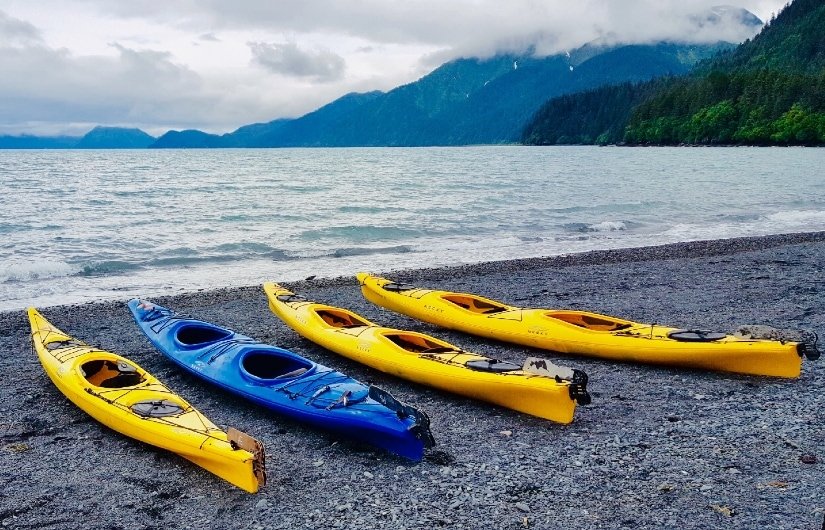The idea of getting a new kayak is exciting. But you can’t just pick the first one you come across.
You see, the right kayak size makes a huge difference while out in the water. Not only does it enhance comfort, but it also promotes safety. You want to be able to control your boat in every situation and easily get out in an emergency. So like many other people, you may be wondering, “what size kayak do I need?”
A straightforward answer would be nice. But every kayaker is different. This comprehensive guide is aimed at helping you find the perfect kayak size for you.
Key Takeaways
- The right kayak size depends on your body size, weight capacity, and kayaking purpose.
- Different types of kayaks have different lengths and widths. Touring kayaks are long and narrow, recreational kayaks are medium-sized, whitewater kayaks are short, and fishing kayaks are wide and stable.
- Your height affects your legroom, center of gravity, and cockpit opening. You should choose a kayak that allows you to stretch your legs comfortably, lower your center of gravity, and get in and out easily.
- Your weight affects the performance and safety of your kayak. Choose a kayak with a weight capacity of 100 to 150 pounds more than your weight plus your gear.
- You should also consider your waist size and hips size when choosing the cockpit width.
Different Kayak Sizes for Different Uses
Your body size is an important factor in choosing a kayak. But it is not the only one. First, you need to figure out what you want to do with the boat. Kayaks are sized differently based on what they are designed to do.
So, first determine what type of kayak you’re looking for. Are you looking for a touring, recreation, whitewater, or fishing kayak?
Recreational Kayaks
As the name suggests, a recreational kayak is for casual paddling. It is mainly for beginners who intend to have a good time in flatwater or a calm lake.
This is the kind of kayak you get when you don’t have anything specific in mind.
Generally, recreational kayaks range from 9 feet to about 12 feet in length and 28 inches to 34 inches in width. (The width of a kayak is also known as the beam).
So, if you are looking for a recreational kayak, this is the range you should focus on.
We will discuss how to narrow down to the perfect boat length and width based on your body size later.
Fishing Kayaks
Boats meant for fishing tend to be the same length as recreational kayaks. However, some of them are much longer— as long as 16 feet. They are also wider to allow for more stability and enough fishing gear.
The length of fishing kayaks ranges from 9 feet to about 14 feet. You can find much longer fishing canoes. The width starts from 31 inches to 36 inches or wider.
They are built for stability, useful for when you have to struggle with your big catch. The width maximizes resistance so they are not the fastest boats.
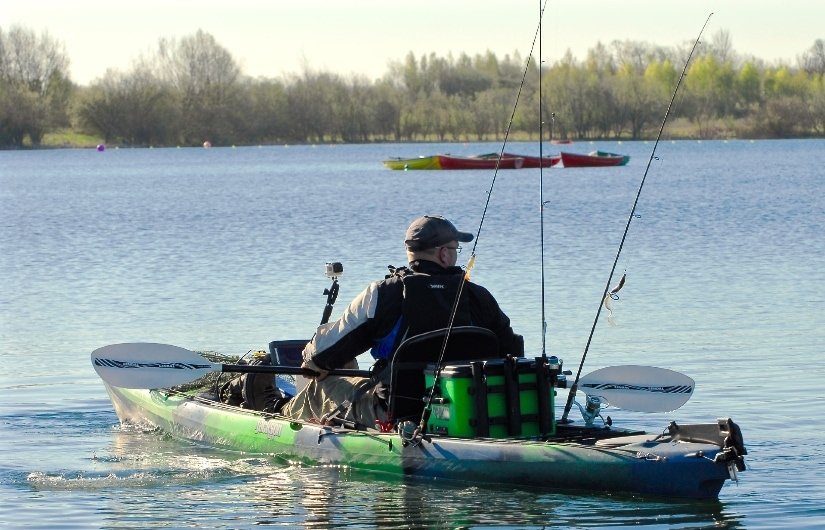
Touring Kayaks
You might have seen some insanely long and narrow kayaks somewhere. Those are touring yaks.
The length ranges from 14 feet to 18 feet or longer. The width starts from 20 inches to 28 inches. The long, narrow shape allows the boats to cut through the water with minimum resistance and maximum speed.
Because of how long they are, maneuvering a touring kayak can be tricky for newbies and petite paddlers. They are also not the best for stability.
Whitewater Kayaks
These are the shortest, with lengths varying from 6 feet to 9 feet. The size makes them maneuverable and easy to handle in extreme conditions.
What Kayak Size Should You Get for Your Weight and Height?
Once you know what type of kayak you want, and the length/width range, it is time to narrow that down.
Height
Shorter paddlers are lucky. They can comfortably fit in almost any kayak without issues. Taller paddlers, on the other hand, have to be keener. Otherwise, they could end up getting a kayak they can barely paddle in.
a. Deck Height and Seat
The taller you are, the higher your center of gravity. A high center of gravity means less stability. While on the water, stability is crucial. So you want to lower your center of gravity. If you are tall, look for a kayak with a deeper seat and a lower deck height.
b. Legroom
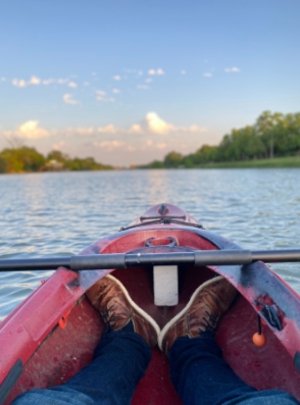
One thing that tall people struggle with is legroom (or lack thereof). A kayak cockpit is not the most spacious place but it is still nice to be able to stretch your legs, right? You will be in the water for hours. You won’t have much fun if you have to cramp up your legs the entire time.
For this reason, you should get a kayak that is on the longer side in the categories mentioned above. For instance, if you want a recreational kayak and your legs are long, go with a 12-foot kayak.
A longer cockpit gives you sufficient room for your legs.
While still on leg length and legroom…
Some kayaks will come with foot braces while others have footwells (mostly sit-on-top kayaks). Whichever one you choose, make sure you can comfortably stretch your legs and control the boat as needed. Adjustable foot braces are ideal. Footwells are fixed but manufacturers usually include several levels.
c. Cockpit Opening Length
The other thing you should consider as far as your height is concerned is the cockpit opening. Again, shorter people will be comfortable with almost all opening lengths. If you are taller, the opening should be long enough for you to get into the cockpit without knocking your knees and ankles against the kayak.
Cockpit lengths range from 34 inches to 50+ inches. Recreational kayaks have bigger openings than their touring counterparts.
It is not easy to know whether a kayak is suitable for your height without using it. You should try several boats and see how comfortable you are. Make sure you can stretch your legs properly.
Weight
There are three things to consider here: your weight, waist size, and hips size. So you will look at the weight capacity and width of the cockpit opening.
a. Weight Capacity
This one isn’t hard to figure out because you already know your weight and manufacturers include the weight capacity in the description.
As a rule of thumb, add 100 – 150 pounds to your weight to get the ideal kayak weight capacity. It depends on what you want to do with the kayak. For recreational kayaks, you can add 100 to 120 pounds. For touring kayaks, you’ll want to add 150 pounds or a number close to that.
As the sum of your weight and that of your luggage approaches the weight limit, the kayak becomes harder to control. It will be very slow and may start sinking if you exceed the weight limit.
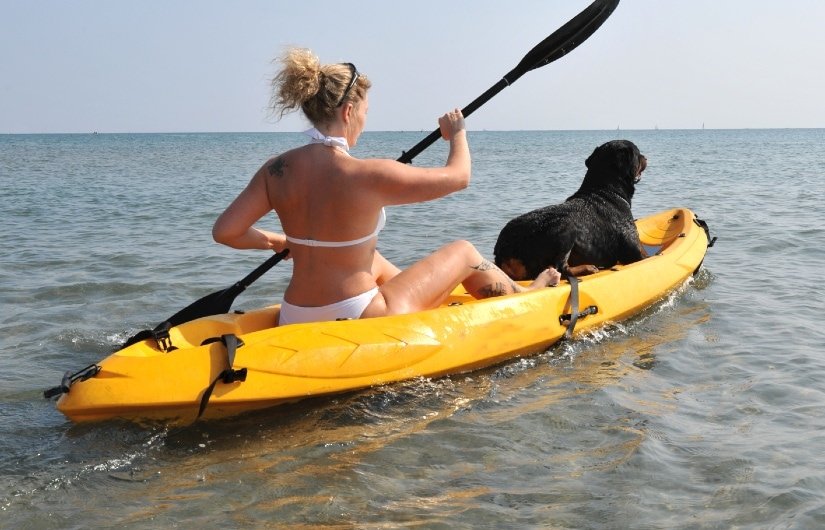
b. Cockpit Opening Width
The upper body doesn’t have much effect on the size of kayak you need, except maybe with the weight capacity. Your lower body is the one that has to fit inside the kayak.
You should be able to get in and out, without struggling. Slim people can do this with pretty much any kayak. But if you have wider hips and waist, you should pay attention to the cockpit width. Manufacturers include this in the description. If they don’t, you better ask.
Typically, cockpit widths in kayaks range from 18 to 24 inches or more. Recreational kayaks have wider openings compared to most boats designed for speed. If you are heavily built, a width of 20 inches or below may be too small.
Try getting into the kayak. If you can slip in without getting stuck, even a little, then that is the right size. Remember you may have to quickly get out of the boat in an emergency. You don’t want to struggle in such a situation.
And if you paddle all year round, factor in the times you will be wearing layers of clothes. You should be able to slip in even then.
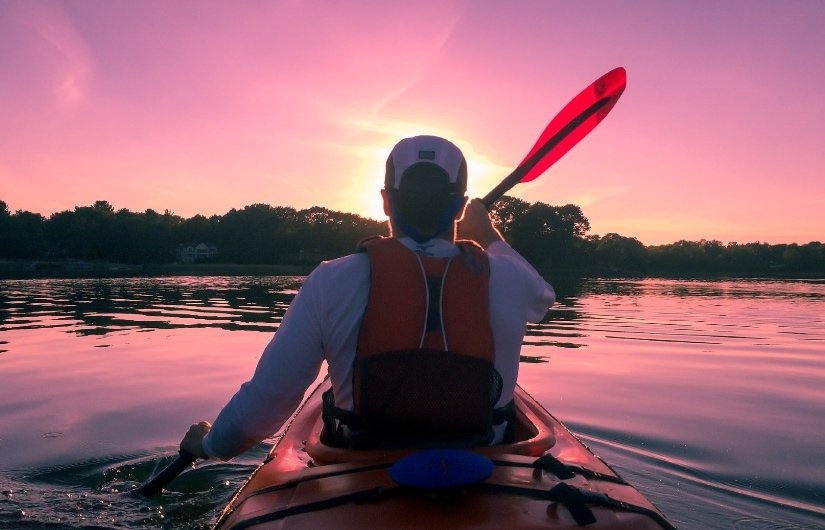
Kayak Volume
Some companies will include volume information to help you decide the size easily. So a boat will either be low, medium, or high volume.
The low volume kayaks are built for smaller kayakers, the medium ones for average-sized kayakers, and the high-volume kayaks are for bigger paddlers. But it is not just about the paddler’s size. This volume also affects how much a kayak can hold.
The kayak volume should not be the sole determinant of your boat size. You may be slender enough for a low volume but too tall for it.
Sit-On-Top Kayaks
It is way easier to choose a SOT than a sit-in. You don’t need to worry about cockpit dimensions or cramped legs. Most sit on top kayaks will be suitable for kayakers of almost every size. But if you are taller than average, you may want to avoid very short boats. The most important thing is the weight capacity.
As already mentioned, make sure you stay under the weight limit. Here is a video showing what weight means for your kayak’s performance.
So, what kayak size do you need?
That depends on what you want to do. For touring, longer and narrower boats are great because they are made for speed. Recreational yaks are medium-sized while whitewater kayaks are short. You should also factor in your height and weight. There should be enough legroom to allow you to stretch your legs when necessary. Check the cockpit opening length and width. Make sure you can get in and out seamlessly, without wiggling or knocking your knees.
It is easy to make a mistake when deciding on a kayak size. I would advise you to visit a rental and try a few kayaks. You will get a feel of what you want. And the tips outlined above will help you make an informed decision.
Did you enjoy this guide? If you have any questions about choosing the ideal kayak size, ask us below. We will be happy to help.

